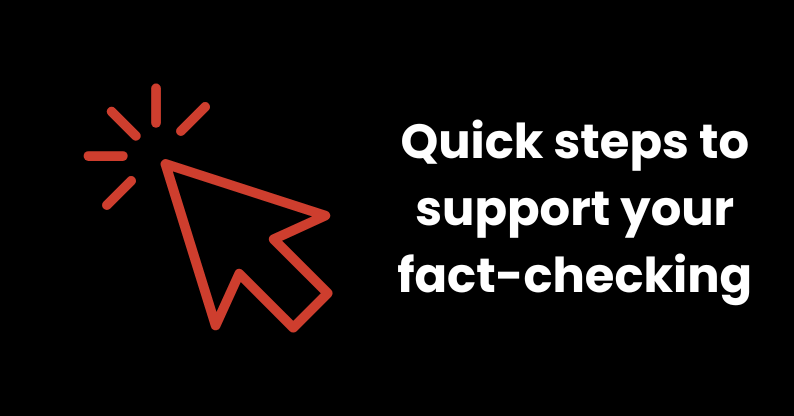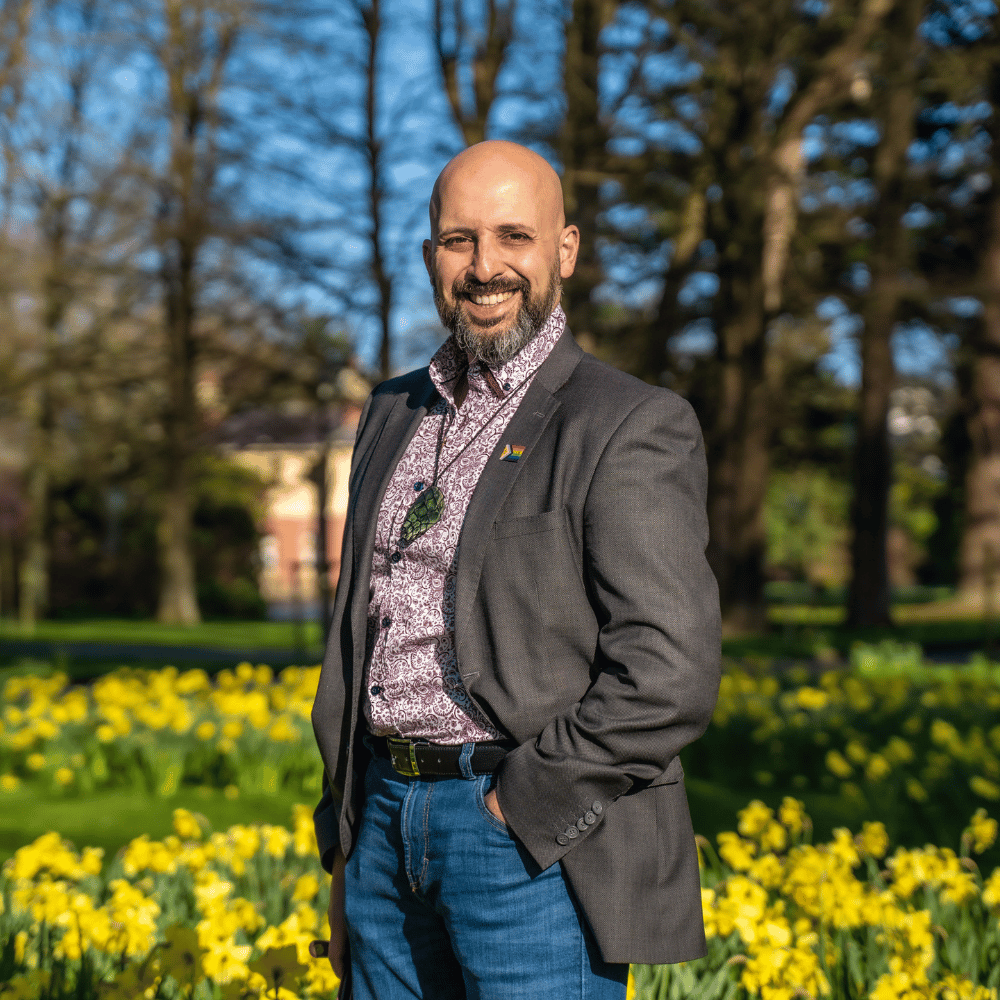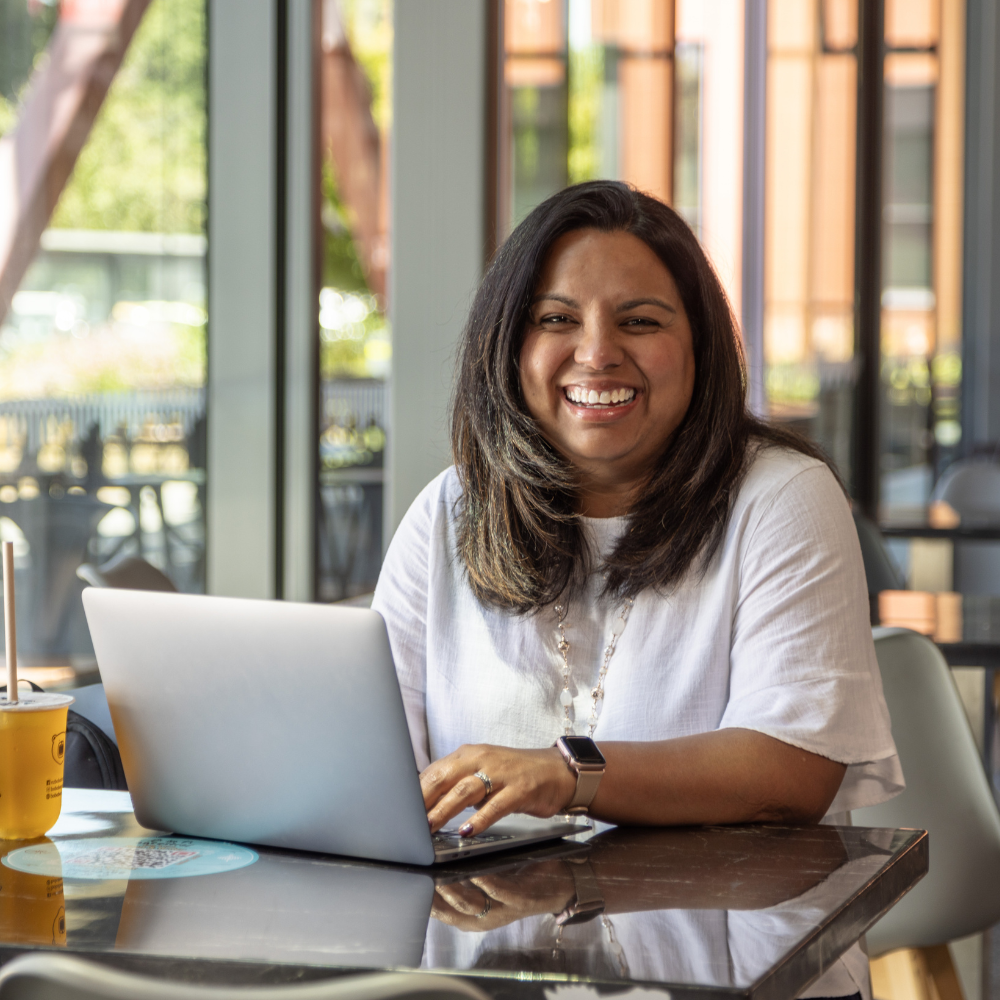Dean Sutherland
24 January 2025
How to become your own fact-checker
How do we separate facts from opinions, when it can be increasingly difficult to tell the difference in the media we consume? Research ethics expert, Dr Dean Sutherland, offers his advice.
Dr Dean Sutherland is an Associate Professor in the School of Psychology, Speech and Hearing at Te Whare Wānanga o Waitaha | University of Canterbury. Dean has served as the Chair of the University’s Human Research Ethics Committee since 2019, and is one of the experts behind our Data Ethics course.
Would you prefer to live in a world where (A) truth reigns supreme over untruth; where facts and opinions are clearly identifiable? Or (B) it’s impossible to tell the difference between truths and lies?
It appears we're sliding further down route B with untruths littering the internet, being peddled and accepted as "facts" before we've opened our morning newsfeeds.
Meta’s recent announcement to reduce the use of 3rd party fact-checking organisations, and implement a Community Notes content moderation approach has commentators and researchers concerned.
Community Notes involves platform users writing notes against posts and then others rating the accuracy of notes. User ratings are then used to determine the accuracy of information.
One response to the current situation is to brush up on your own Fact-checking skills.
Firstly, understand the difference between ‘opinions’ and ‘facts’. A fact is typically identifiable via our senses. Did you or anyone else you trust, hear, see, smell, taste, or touch the ‘fact’?
In contrast, opinions are expressions of beliefs or values and difficult or impossible to prove. For example, Sir Donald Bradman was the greatest cricket batter to play the game (opinion). His test average of 99.94 remains highest of all time (fact)[i]. So facts are verifiable…able to be proven to be true or false. Opinions are not verifiable.

Sources
Confirming the original source of information. Who provided the information? What is their experience and expertise? Members of government agencies, academic, news organisations are typically higher trust sources than social media posts. If you’re relying on social media – is the author verified? Be particularly wary of ‘anonymous’ authors.
Cross-checking
Cross-checking involves finding multiple reputable sources stating similar facts. Are experts in agreement (more likely fact) or do sources describe a phenomena differently (potential opinion). If summary information is presented, is the full data accessible and does the data support the summary?
Recency of information
Facts can change quickly. When was the information published or updated? Even trusted news organisations have become adept at presenting information in ways that appear as though a news worthy event happened recently. A publication date check can reveal the so-called news is many months or even years out of date. It’s important to understand that time lags do exist between the collection and publication of government data and academic research – often many years.
Beware of...
The adage “if something appears too good to be true… it probably is” holds when sorting facts and opinions. Language that provokes emotions (e.g., anger, fear, ecstasy) can also be sign of opinions. Catchy headlines – including “Breaking News” - that are followed by a swamp of advertisements are often clickbait. Missing citations or references and writing mistakes (e.g., spelling or grammar) can also reduce trustworthiness of information.
By practising these fact-checking skills regularly, you'll become better at spotting the differences between facts and misinformation. Good fact-checkers put their opinions and beliefs aside and focus on finding data and following evidence.
I think it’s important to be open to the possibility that our opinions may be based on incorrect information and most importantly being prepared to change our opinions and say the words “I was wrong”.
Sources consulted in the preparation of this post.
- https://www.npr.org/2025/01/17/1225172096/meta-free-speech-zuckerberg
- https://www.abc.net.au/news/2025-01-08/elon-musk-community-notes-on-meta-facebook-explained/104794984
- https://www.espncricinfo.com/cricketers/donald-bradman-4188
- https://factcheck.org
- https://www.compoundchem.com/2014/04/02/a-rough-guide-to-spotting-bad-science/
- Moore, W. E., McCann, H., McCann, J. (1985). Creative and Critical Thinking. Houghton & Mifflin.
Similar posts
Get notified on the latest in online learning
Be the first to know about our new programmes and other online updates by subscribing to our newsletter.
Follow us on LinkedIn for the latest learning updates.










